Entries Tagged 'Health' ↓
August 17th, 2010 — Health, Kate, Nature
WHY does soap have to be so complicated? The other day my wife handed me some alleged body wash that apparently claims as its primary function “exfoliation” — or “moisturizing” — or some other ludicrous buzzword. Look, soap marketing people, here’s what I want when I take a shower:
- Stuff to shampoo my hair
- Stuff to condition my hair
- Stuff to clean my face
- Stuff to clean my body
I do not need or want to infuse my hair or any other part of me with complexities, I don’t care about the bottle texts’ creativity, I just want to wash off, okay? Though…I admit…this might be fun to try out:
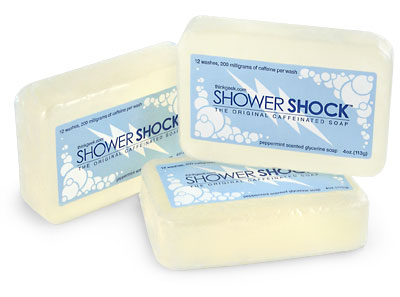
Caffeinated soap
P.S. I blogged this while about 30,000 feet over New Mexico and Texas!
WHY does soap have to be so complicated? The other day my wife handed me some alleged body wash that apparently claims as its primary function “exfoliation” — or “moisturizing”...
September 17th, 2009 — Health, Healthcare-Reform, Politics, Public Option Letter Campaign
I hereby announce my campaign to snailmail all 535 United States Congresspeople personalized letters before the year is out, in favor of a genuine, government-run public option. So far I’ve snailmailed 4; 531 to go.
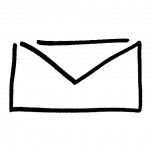
(Image: Timothy Morgan)
Here’s sufficient info to learn how to snailmail members of the US Congress, regardless of what your stance is on whatever issue. Here’s a frequently-updated priority list of which US Congresspeople to contact in favor of a genuine public option, though you of course might choose others to write.
Maybe you doubt the efficacy of writing US Congresspeople. I understand, especially when, for instance, the pharmaceutical and health product industries lobbied the US Congress $1.2 million per day in the first three months of 2009 (not counting advertising & other efforts, including whatever’s under-the-table). Despite much information to the contrary, citizen snailmail (especially when personalized) does reach US Congresspeople, or at least their staff, without too much delay. Evidence:
- In 2009 The Washington Post persuasively reported a professional lobbyist firm snailmailed astroturfed (fake grassroots) letters to US Representative Tom Perriello. So if they expect fake letters to work, you should expect real letters to work. I can’t resist mentioning Shakespeare: as the New York Times put it, “Generated mail is a pretty old idea. In Shakespeare’s ‘Julius Caesar,’ Brutus is persuaded to assassinate Caesar in part by letters of support from the public — letters that were actually faked by Cassius ‘in several hands … as if they came from several citizens.'”
- On 10 Sept 2006, The Pottsville Republican & Evening Herald published a story about a 10-year-old girl, Taryn Kitchenman, who wrote US Representative T. Timothy Holden a letter. She wrote him: “I was wondering instead of putting [the new playground] downtown right by the old one, could you put it in Arnots [her neighborhood]. I was wondering because we only have one playground and it is not that good. We don’t have swings, we don’t have a good basketball court. I am only 10, I am not allowed downtown. Try and help me.” She received a reply the same week. Presumably this was a snailmail letter (and not fax or email “letter”).
To prove that I’m serious about my campaign, below I’ll post the letter I sent US Representative Nancy Pelosi yesterday. In an attempt to protect myself against discrimination and stigmatization, I censored out a very small portion of the letter, though presumably the letter is now public record somewhere. I’ve also PDF’ed the letter so you can see the formatting in case you want a guide for your own snailmail. Because you’re going to write your own personalized letter(s) — or do something equivalent or better — right?
Douglas Lucas
[street address]
Fort Worth, TX 76109
[email address]
The Honorable Nancy Pelosi
Office of the Speaker
H-232, US Capitol
Washington, DC 20515
16 September 2009
Dear Representative:
I’m writing to support your insistence that a healthcare reform “bill without a strong public option will not pass the House” (your Press Release, 3 Sept. 2009), to agree with your statement that if “a vigorous public option is not included, it would be a major victory for the health insurance industry” (your Press Release, 3 Sept. 2009), to ask you to continue to insist on a strong, government-run public option — which, as you know, does not mean a co-op plan such as that of Senator Max Baucus — and to ask you to fight any spin attempting to pass off a co-op plan as a “public option.” I’m a self-employed writer and tutor in Fort Worth, Texas, and, just out of college, I’m working toward a public-school teaching certification. Like many Americans, I have a pre-existing condition — in my case, [type of pre-existing condition]. I lose my BC/BS disability coverage in February.
My medicine for this one illness alone costs nearly $1000 per month. Without reliable health insurance, I cannot responsibly teach public school. Sure, a school would provide me with group coverage, but what if I were laid off? COBRA only goes so far; high-risk pools only go so far. Just as you chose a career in civil service to help others, so I want to help others, and a government-run public option would give me a strong safety net so I could focus on teaching. A co-op plan wouldn’t have the membership clout needed to compete with private insurance. The Iowa state government tried a nonprofit co-op — and it died in two years (New York Times, 17 Aug 2009). Just like a trigger plan, a co-op plan would take longer to start than a government-run plan, and we don’t have any more time. According to a 2007 American Journal of Medicine study, an American family files for bankruptcy in the aftermath of an illness every 30 seconds. In 2009 the Center for American Progress explained that every day, 14,000 Americans lose their health insurance: 2,190 in your state, 470 in mine. Every day. It is a moral issue.
Thank you for fighting in favor of a strong, government-run public option. Please keep fighting.
Sincerely,
[hand signature]
Douglas Lucas
I hereby announce my campaign to snailmail all 535 United States Congresspeople personalized letters before the year is out, in favor of a genuine, government-run public option. So far I’ve...
September 8th, 2009 — Health, Healthcare-Reform, Politics
The public option, says the Chicago Tribune in 2009, is a “government-sponsored insurance policy [that] would be offered alongside private plans.” It’s a Medicare-like option American citizens could select voluntarily if they so desired, and that taxed American citizens would pay for, as they already pay for other public goods/services ranging from air traffic control to zoos.
In an effort to take some of the right-wing food coloring out of the swimming pool, here’s some information, as opposed to dis-information. By itself, the information below doesn’t prove the public option a good thing (though the public option is a good thing). But it does make you sigh and wonder where the hell the (representational, constitutional) United States democracy has gone off to. Here’s a hint about some of the above-the-table answers.
If you hate the public option but still want a lesson out of this, it’s that you should look at primary sources as much as possible when learning stuff. Preliminary research seems to indicate teens today, for example, have practically no media literacy training and typically don’t think about sources’ credibility. Finally, you should watch President Obama’s speech about healthcare reform tomorrow (Wednesday September 9th), which might change the ballgame quite a bit.
N.B. The information below is subject to irrelevancy as time marches on.
- As of August 10, the American Medical Association supports the public option. Source? Their own website.
- As of September 1, the ALF-CIO, the United States’ largest labor union, supports the public option. Source? CBS, and (Aug 21) the AFL-CIO website.
- As of August, the AARP, the United States’ largest retirees’ association, supports the public option. Source? One of their own websites.
- As of June 21, a sufficient number of House Democrats support the public option in order to pass it. Source? The Boston Globe.
- As of September 8, enough Senators can get a public option through with the reconciliation tactic, and the Senate has a Democratic majority. Source? The Washington Times.
- As of September 7, President Obama “continue[s] to believe that a public option within that basket of insurance choices will help improve quality and bring down costs.” Source? White House transcript of his Labor Day speech.
- As of September, most Americans approve of the job President Obama’s doing. Source? CBS.
Click the graph below to see that the American citizenry definitely supports the public option. Sources: Quinnepac (July); Washington Post / ABC (June); New York Times / CBS (June); Wall Street Journal / NBC (June); if you want the others, you could start by looking at the source information near the bottom of this page.
A supposedly Chinese curse says, “May you live in interesting times.”
The public option, says the Chicago Tribune in 2009, is a “government-sponsored insurance policy [that] would be offered alongside private plans.” It’s a Medicare-like option American citizens could select voluntarily...
February 9th, 2009 — Health
 In mid-December I embarked on a one-man “science” experiment: I decided to drink nothing but water in order to find out what changes I’d experience in terms of energy level, mood, weight loss, etc. Along the way, I became curious about all issues H2O. This post — the first in a series on drinking water — will address how much water a person should drink and what you might gain from drinking more water. Later posts will take on issues such as tap water vs. bottled water, filters, and more. Trying to figure all this out, you can start sweating, a lot, and therefore need to drink more water. But don’t worry: I’m here to help, even though I’m by no means a doctor or an expert. If you’re really worried (or thirsty), go get yourself one of those.
In mid-December I embarked on a one-man “science” experiment: I decided to drink nothing but water in order to find out what changes I’d experience in terms of energy level, mood, weight loss, etc. Along the way, I became curious about all issues H2O. This post — the first in a series on drinking water — will address how much water a person should drink and what you might gain from drinking more water. Later posts will take on issues such as tap water vs. bottled water, filters, and more. Trying to figure all this out, you can start sweating, a lot, and therefore need to drink more water. But don’t worry: I’m here to help, even though I’m by no means a doctor or an expert. If you’re really worried (or thirsty), go get yourself one of those.
The standard maxim: 8 glasses of water a day
You might know the standard maxim: drink 8 glasses of water (64 ounces) per day. Many say no one really knows where this recommendation comes from. But a 2/13/94 Chicago Tribune article by Bob Condor quoted an expert who claimed the maxim originated in the 1945 US RDAs, which said: “A suitable allowance of water for adults is 2.5 liters (83 ounces) daily in most instances” — somehow 83 ounces eventually morphed to 64 — and “An ordinary standard for diverse people is 1 milliliter [0.03 ounce] per calorie of food. Most of this quantity is contained in prepared foods.” (Emphasis added by me.)
I don’t believe the 1945 US RDAs are the source of the maxim, given the 83/64 ounce confusion (although, how many ounces did “a glass” mean in 1945?). So we’re back at “no one really knows.”
Anyway, if the 1945 RDAs are correct, we shouldn’t try to take in 8 glasses of pure water a day — just 8 glasses’ worth of water counting all the beverages and foods we have. The water automagically contained in a grape or an apple (or indeed, a grapple) would count toward your total. Americans at large erroneously thought the recommendation called for 8 glasses of pure water because, a National Academy of Sciences expert said in the Tribune article, the emphasized sentence in the quotation nefariously escaped the notice of newsmakers and historians fairly effectively.
Institute of Health’s 2004 take on the standard maxim
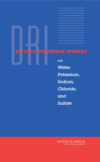 In 2004 the Institute of Health issued a report resurrecting the lost sentence’s point and adding two more. (Soon after the report’s release, Jane E. Brody at the New York Times gave her more or less approving take on it.) A section of an Institute of Health summary of the report says:
In 2004 the Institute of Health issued a report resurrecting the lost sentence’s point and adding two more. (Soon after the report’s release, Jane E. Brody at the New York Times gave her more or less approving take on it.) A section of an Institute of Health summary of the report says:
The vast majority of healthy people adequately meet their hydration needs by letting thirst be their guide. The report did not specify the exact requirements for water, but set general recommendations for women at approximately 2.7 liters (91 ounces) of total water — from all beverages and foods — each day, and men an average of approximately 3.7 liters (125 ounces) of total water. The panel did not set an upper limit on water.
I’ll focus on three of the Institute of Health’s claims: 1) food should count toward your total water intake; 2) evil caffeinated beverages should count toward your 91/125 ounces (…what happened to 83 ounces? or 64 ounces?); 3) the vast majority does just fine letting thirst guide their water-partaking.
Should food count toward your total water intake?
No. Internet-spear-famed natural bodybuilder Tom Venuto argues in his e-book Burn the Fat, Feed the Muscle (which I’ve found helpful in general) that you should “always err on the side of too much water rather than too little” and thus follow the about-1-mL-per-kilocalorie guideline (from the 1945 RDAs and elsewhere) without counting the water in your food toward your total water intake goal. Well, natural not-a-bodybuilder Douglas Lucas can’t give you such a sophisticated argument, but can only rely on his own experimentation. (Actually, regarding water, Venuto’s probably in the same boat — groan. I goof on him only because he has bigger muscles than I.)
Here’s what I learned experimenting, generally drinking around 64 ounces of pure water a day (i.e. not counting the water in my food). If I manage to drink that amount, and especially if I drink some water right when I wake and right before sleep, I don’t have trouble with headaches. The dehydration headaches were only a vague problem before my experiment; such minor headaches, I assumed, might be normal — perhaps the result of not sleeping enough. Or something. Nope. Drink enough water, they don’t occur. ‘least for me. Personally, I haven’t noticed any of the other reported physical and psychological benefits of drinking enough water — improved skin, digestion, mood stability, weight loss, whatever — but then again, I’m not yet the most observant person. My energy level has only increased in the sense that without headaches, I feel more enthusiastic in general.
But if I simply assume the water in my food is enough, and stop drinking as much water, the minor headaches return.
Should evil caffeinated beverages count toward your total water intake?
Well, I don’t know the true extent of caffeine’s diuretic effect — that is, its effect of increasing urination and thus worsening dehydration — but I do know, with tautologically certainty, that evil caffeinated beverages are evil. So I say: don’t drink or eat caffeine in the first place! =)
Is thirst a reliable indicator of your hydration level?
Though this 2008 NPR article disagrees, I will stomp my foot down definitively and shout: “Thirst is not a reliable indicator of one’s hydration level.” There’s a phenomenon F.M. Alexander called “faulty sensory appreciation” (and sometimes, much more excitingly, “debauched sensory appreciation”). Just because you sense something — such as the apparently hydrated state of your mouth — doesn’t mean your sensations are telling you what you think they are. I’ve learned that if I’m (relatively) dehydrated for a long enough period of time, my ability to perceive my hydration level well will fall into disrepair, disrepute, dishonesty … it will become … debauched! But once I resume drinking enough water, my ability to accurately register my hydration level improves. Try this yourself if you don’t believe me (if you’re like most people, currently you’re dehydrated). Incidentally, the whole phenomenon of faulty (debauched!) sensory appreciation fascinates me.
After the release of the 2004 report, Bob Condor reprised his role at the Chicago Tribune of giving his watery take, and pointed out the American College of Sports Medicine said: Not so fast there, Institute of Health. According to Condor, the ACSM argued prolonged physical activity and/or heat exposure — e.g., switching climates — can “confuse” the body’s thirst response. Condor also mentioned some researchers theorize the pineal gland (formerly Descartes’ seat of the soul!), which controls thirst, works less and less well as we age. I say it’s all about debauched(!) sensory appreciation. People just don’t know they’re thirsty, because their thirst response has become rusty from disuse.
In conclusion!
Obviously the game changes while you’re exercising or otherwise sweating a lot; I’m not sure how just yet. In general, though, in my experience, the 1 mL-per-kilocalorie guideline — which for me points to the standard maxim of 8 glasses a day — is best, so long as you do not take into account the water contained in food (which you shouldn’t), and so long as you do avoid caffeine (which you should). And don’t trust your thirst … it’s probably debauched. =)
So go drink some water!
In mid-December I embarked on a one-man “science” experiment: I decided to drink nothing but water in order to find out what changes I’d experience in terms of energy level,...
December 11th, 2008 — Health
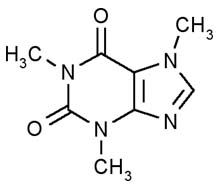 I eliminated all caffeine from my diet last month. The month or so before, I drank it regularly in the morning — usually via a caffeinated smoothie and an energy drink — and throughout the day. I’d have the occasional caffeinated soft drink and the occasional caffeinated whatnot. Caffeinated caffeinated caffeinated. My world depended on it, subtly but surely. Now I preach the evangel of quitting caffeine to you.
I eliminated all caffeine from my diet last month. The month or so before, I drank it regularly in the morning — usually via a caffeinated smoothie and an energy drink — and throughout the day. I’d have the occasional caffeinated soft drink and the occasional caffeinated whatnot. Caffeinated caffeinated caffeinated. My world depended on it, subtly but surely. Now I preach the evangel of quitting caffeine to you.
After giving up caffeine, I no longer have to worry so much about wiping out grogginess or appeasing headaches. No more rushing to the refrigerator or Starbucks or a gas station. I have much more energy. I get by fairly well on 6-7 hours of sleep a night instead of slogging through the day on 8-9. My mood stays more consistent, too.
Since caffeine is addictive, quitting it sucks. Temporary symptoms of caffeine withdrawal can include the infamous headache, irritability, nausea, sleeping a lot (your body finally catching up), and becoming just plain stupid (impairment in various cognitive skills, such as fuzzified concentration). I experienced all of these except nausea and stupidity — I am never stupid, because like Wile E. Coyote, I am a Super Genius.
I found caffeine withdrawal slightly difficult, but manageable. John Hopkins University maintains a fact-filled page on caffeine dependence. They say withdrawal takes 12-24 hours to set in — and it can set in even if you drink only a cup of coffee a day. Happened to me after about 16 hours. According to the page, symptoms peak 20-48 hours after abstinence. My symptoms peaked around day two and three. Caffeine withdrawal lasts a total of two days to one week or more, the page reports; for me, withdrawal lasted nine days. Your mileage may vary.
In the interest of complete transparency, I must admit that one day I forgot — really! — that chocolate contains caffeine, and ate a tiny bit; the effect was negligible, so I discount the incident entirely. (I guess for a split second I wasn’t a Super Genius.) You really have to pay attention to everything you consume (a good idea anyway), because just about everything has caffeine in it, including mate, guarana, and decaf coffee. If you drink a pot of decaf, there’s enough caffeine in there for you to notice.

Why should you quit caffeine? After all, some studies link caffeine to certain health benefits. For me, it’s about the energy boost: imagine spending more time enjoying what you want to do instead of feeling miserable and dependent on lugging around your latte or Diet Coke or whatever particular poison. What are you going to do if you go on a camping trip? Pop NoDoz?
Poison, ayup, and not that fun of one. Caffeine interferes with sleep by reducing total sleep time, making it harder to fall asleep, and decreasing sleep quality. To be fair, a sleep researcher named Dr. Dement — the coolest name for a scientist — argues in The Promise of Sleep a bit of coffee before noon won’t affect a night bedtime. Still, Mark Adams at New York Magazine writes (early 2008):
The United States Centers for Disease Control reports that sleep disorders are more pervasive than ever. Americans, on average, are getting 6.7 hours of sleep per night, the lowest amount since records have been kept, and are racking up an hour or more of sleep deficit per day. Sales of Ambien, Lunesta, and other prescription sleep aids have more than doubled in the past few years. “You have people drinking caffeine all day and taking sleeping pills at night,” [Laura] Juliano says[, American University psych professor and coffee researcher].
Sleep loss causes its own problems, Adams continues:
Sleep loss is increasingly seen as a major factor in the obesity epidemic. The sleep-deprived are more susceptible to depression and tend to have less control over their emotions. Sleep loss also weakens problem-solving and decision-making skills and, naturally, leaves a sufferer exhausted—all of which are conditions that caffeine is called upon to solve. “If we drink coffee all day long, it’s harder to sleep at night, and we need more coffee to get up and go to work the next morning,” says Lane. “The cycle repeats itself.”
Juliano and Roland Griffiths, a professor of psychiatry and neuroscience at Johns Hopkins, argue caffeine’s alleged benefits might be illusory. Quoting Adams again:
The escape from the clutches of withdrawal is a big part of what makes the day’s first cup of coffee so wonderful. “Feeding that dependence feels really good,” Juliano says. The implication: The positive feelings we associate with drinking coffee don’t represent a net gain in energy or alertness; they’re really the result of withdrawal maintenance.
When Griffiths and Juliano teamed up to review 170 years of caffeine research, much of which confirmed the drug’s reputation as a brain booster, they noticed a pattern: Most studies had been done on caffeine users who, in the interest of scientific rigor, were deprived of the stimulant overnight. Because caffeine withdrawal can commence in just twelve hours, by the time each study’s jonesing test subjects were given either caffeine or a placebo, they had begun to suffer headaches and fatigue. For the half that received the stimulant—poof!—their withdrawal symptoms vanished. The other half remained uncaffeinated, crabby, and logy, and guess which group scored higher on cognitive tests time after time? The boost the test subjects who got the caffeine felt may have simply been a function of having been deprived of the drug.
And a neat formulation from Adams’s article by James Lane at Duke: while caffeine can keep us awake, “it doesn’t make the brain any less tired.”
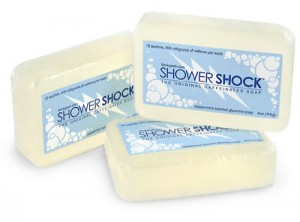 Clearly many of us are hooked on caffeine, so it makes sense for companies to add it to products to addict us. If you want to increase your dependence on caffeine, you can always absorb it through your skin first thing out of bed with Shower Shock: The Original Caffeinated Soap or Spazzstick: The World’s First Caffeinated Lip Balm. If that’s still not enough, wear caffeine-laced panty hose (link is to a .pdf with a description; no pic, unfortunately). I’m not making these up.
Clearly many of us are hooked on caffeine, so it makes sense for companies to add it to products to addict us. If you want to increase your dependence on caffeine, you can always absorb it through your skin first thing out of bed with Shower Shock: The Original Caffeinated Soap or Spazzstick: The World’s First Caffeinated Lip Balm. If that’s still not enough, wear caffeine-laced panty hose (link is to a .pdf with a description; no pic, unfortunately). I’m not making these up.
I still plan on increasing my energy level in other ways. For this month’s science experiment, I’ll drink only water: no alcohol, no Gatorade, and sadly, no orange juice. I don’t really expect much of a benefit in terms of increased energy — just in terms of fat loss — although some, such as Rob of formerfatguy.com, sings water’s praises for doing everything from increasing energy to aiding digestion. Others say toting around water bottles isn’t necessary. We’ll see.
If you want to quit caffeine, wean yourself off, or be bold and quit cold turkey. Improve your discipline! Establish a healthy habit! Check out Steve Pavlina’s how to quit caffeine for advice.
If you don’t want to quit, at least be festive about your coffee, like these folks on YouTube, who sing and dance JS Bach’s “Coffee Cantata” (BMV 211), a comic cantata composed in 1734. (Incidentally, JS Bach is one of my favorite composers.) One line from the piece: “If I can’t drink my bowl of coffee three times daily, then in my torment I will shrivel up like a piece of roast goat.” Be braver than that person! ;-)
I eliminated all caffeine from my diet last month. The month or so before, I drank it regularly in the morning — usually via a caffeinated smoothie and an energy...
November 23rd, 2008 — Health
Today marks Day 9 of my 30-day(-minimum!) experiment cutting out caffeine.
Once — perhaps on Day 5; can’t really remember — I completely forgot what I was doing and had a miniscule amount of chocolate. I don’t plan on repeating my mistake, but regardless, that minor intake of caffeine doesn’t seem to have made any impact on my results. I feel at liberty to completely discount it. =)
So, my results? I totally have more energy now. Enough so others have noticed. Not enough for my liking, however; I need to exercise more consistently and such for that. Overall, though, the energy increase easily has been worth the 7-or-so days of miserable caffeine withdrawal. Also: I fall asleep faster now. Within 10 minutes. That probably has more to do with a consistent bedtime than with cutting out caffeine.
I don’t find avoiding caffeine difficult in any emotional way — especially after enjoying the energy increase. I’d prefer being able to eat chocolate, but, eh, ’tis better for me not to anyway! The only real difficulty I’ve found is that it’s easy to accidently consume something that does contain caffeine. Seems every drink and piece of candy has some. Grr. I suppose the only solution is to be incredibly conscious of everything you eat or drink.
If you’re considering cutting out caffeine, I highly recommend it.
Today marks Day 9 of my 30-day(-minimum!) experiment cutting out caffeine. Once — perhaps on Day 5; can’t really remember — I completely forgot what I was doing and had a miniscule amount of...
November 14th, 2008 — Health
As of today I’m cutting caffeine out of my diet. At least for a month (until December 15th). I’m doing it mostly as an experiment to see if I have more or less energy as a consequence. I’ve done it before, several times, with both positive and negative effects. However, I’ve never stuck with it for 30 days and recorded my results. Now I will!
As of today I’m cutting caffeine out of my diet. At least for a month (until December 15th). I’m doing it mostly as an experiment to see if I have more or...


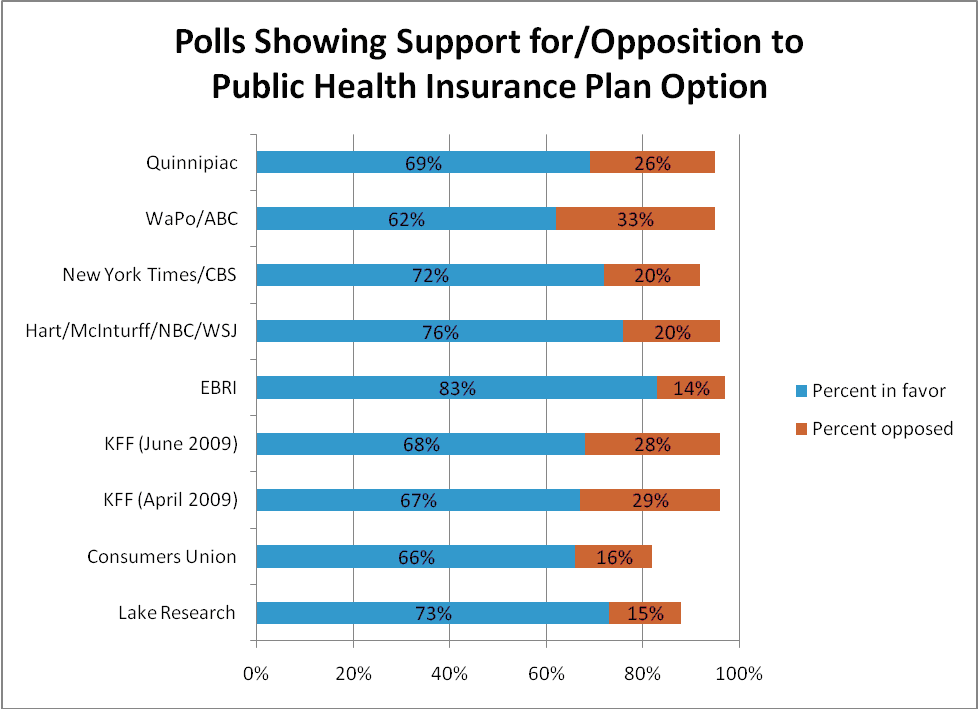





 Twitter:
Twitter:
Join the conversation